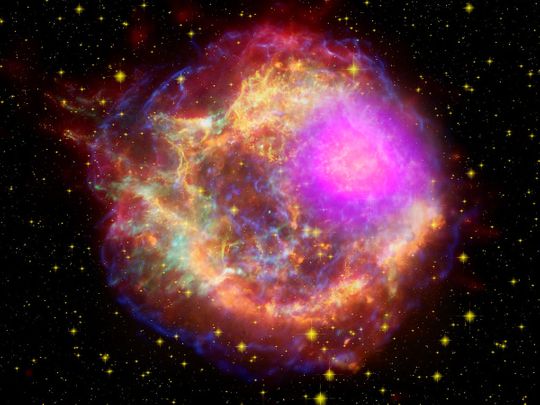
Massive stars at the end of their lives go out with a spectacular boom. Gases spew out for thousands of kilometres in a fraction of a second, burning brighter than a billion suns for months. Luckily, we humans on Earth cannot hear a dying star.
Click start to play today’s Word Search, where you can spot the words “sound” and “vacuum”.
Elementary science taught us that sound does not travel in vacuum because it needs molecules to vibrate. As long as there is air between us, we can hear each other.
But particles are so far apart in interstellar space that sound waves have nothing to latch on to. Our favourite sci-fi movies are quite off the mark when space ships explode loudly – the cosmos is a vacuum and its catastrophes are, therefore, uneventfully silent.
Robbing astronauts of the ability to hear in the void is as dangerous as it sounds. The only way astrophysicists can prevent future missions from going haywire is to bend the mysteries of space to their advantage. Even if it means eavesdropping in space.
Scientists at Nasa began converting waves collected by probes into frequencies audible to our human ears. At any given time, the cosmos is thrumming with charged particles, emitting electromagnetic waves (think light) that, unlike sound, are capable of travelling in vacuum.
In 2002, the Cassini spacecraft captured radio emissions on its mission to ringed Saturn. Hovering 374 million kilometres above the planet, Cassini transmitted back eerie frequencies that sounded like a haunted wailing.
Another Nasa-led project called sonification converts high-resolution pictures of celestial phenomena into audio clips. Images of nebulae, galaxies and supernovae from satellites Chandra X-ray and Hubble Space Telescope pack colourful elements. Bright areas produce a louder sound, while the colour red, representing iron, makes low-pitched notes. By assigning each a different instrument, Nasa produced something akin to outer space orchestra.
So we might just be able to hear the closest supergiant star to us explode. Red Betelgeuse, which is 950 times larger than our sun, is nearly out of fuel and on its way to becoming a supernova luminous enough to light up our skies for ages. It’s a show our progenies will have the front-row seats to 100,000 years from now.
Which cosmic body makes your favourite sound? Play today’s Word Search and tell us at games@gulfnews.com.









